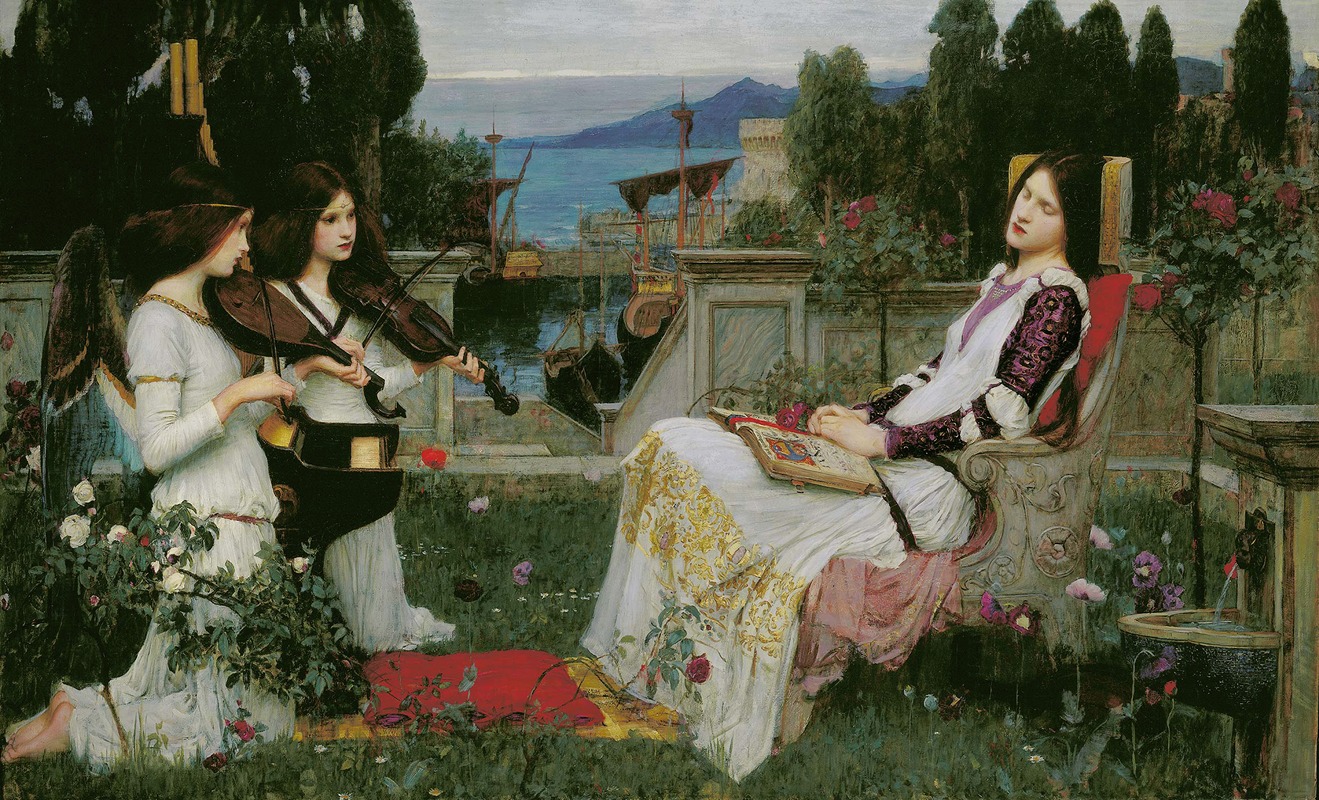
St Cecilia
A hand-painted replica of John William Waterhouse’s masterpiece St Cecilia, meticulously crafted by professional artists to capture the true essence of the original. Each piece is created with museum-quality canvas and rare mineral pigments, carefully painted by experienced artists with delicate brushstrokes and rich, layered colors to perfectly recreate the texture of the original artwork. Unlike machine-printed reproductions, this hand-painted version brings the painting to life, infused with the artist’s emotions and skill in every stroke. Whether for personal collection or home decoration, it instantly elevates the artistic atmosphere of any space.
John William Waterhouse's painting "St Cecilia" is a notable work by the English artist, who is renowned for his depictions of mythological and literary subjects. Waterhouse, a prominent figure associated with the Pre-Raphaelite Brotherhood, often infused his works with romanticism and a keen attention to detail. "St Cecilia" is no exception, capturing the essence of the saint with Waterhouse's characteristic style.
St. Cecilia is revered as the patron saint of music and musicians in Christian tradition. Her story, which has inspired countless works of art and music, tells of a Roman noblewoman who was martyred for her Christian faith. According to legend, Cecilia was deeply devoted to God and is said to have heard heavenly music in her heart during her wedding ceremony, a narrative that has cemented her association with music.
Waterhouse's painting of St Cecilia reflects his fascination with the themes of beauty, spirituality, and the ethereal. The artwork portrays St Cecilia in a serene and contemplative pose, often depicted with musical instruments, which symbolize her patronage of music. Waterhouse's attention to detail is evident in the intricate rendering of her garments and the surrounding environment, which often includes elements that suggest a connection to the divine or the mystical.
The painting is characterized by Waterhouse's use of rich colors and soft lighting, creating a dreamlike atmosphere that enhances the spiritual quality of the subject. His technique often involved layering glazes to achieve a luminous effect, which is evident in the delicate portrayal of St Cecilia's features and the gentle play of light and shadow.
Waterhouse's depiction of St Cecilia is consistent with the broader Victorian interest in medieval and classical themes, as well as the Pre-Raphaelite movement's emphasis on beauty and emotional expression. The Pre-Raphaelites sought to return to the detail, intense colors, and complex compositions of Quattrocento Italian art, before the time of Raphael. Waterhouse, although not an original member of the Brotherhood, was heavily influenced by their ideals and became associated with their style.
The painting of St Cecilia by Waterhouse is housed in a private collection, and as such, it is not as widely accessible as some of his other works. However, it remains an important piece within his oeuvre, exemplifying his skill in capturing the intersection of the human and the divine.
Waterhouse's legacy as an artist is marked by his ability to convey emotion and narrative through his paintings, and "St Cecilia" is a testament to his talent in bringing historical and mythical figures to life. His works continue to be celebrated for their beauty and their ability to transport viewers to a world of imagination and wonder.
In summary, John William Waterhouse's "St Cecilia" is a masterful representation of the saint, embodying the artist's dedication to detail, color, and the evocative power of art. Through this painting, Waterhouse contributes to the enduring legacy of St Cecilia as a symbol of music and spiritual devotion.


















